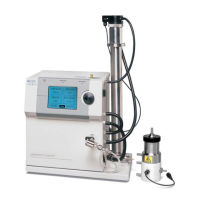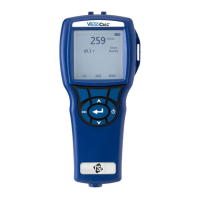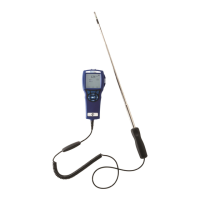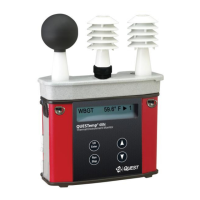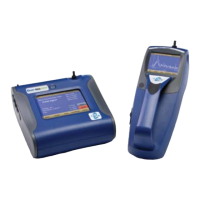Theory of Operation B-15
Particle Counting
Once the particles have grown to an optically detectable size
(typically, 2 to 3 micrometers), they pass through a light beam and
scatter light onto a photodetector. The calculation of particle
concentration is different for each CPC, but all models operate in
the single-particle count mode at concentrations below a certain
value. The upper concentration limit for single-count mode is
10,000 particles/cm
3
for 3772, 3010, and 3022A CPCs, 99,900
particles/cm
3
for 3025A UCPC, 50,000 particles/cm
3
for 3775 CPC
and 3782 WCPC, 20,000 particles/cm
3
for 3785 WCPC, 100,000
particles/cm
3
for 3786 UWCPC, and 300,000 particles/cm
3
for
3776 UCPC. The 3775, 3022A CPC and 3785 WCPC also operate in
photometric mode based on photometric calibration up to 10
7
particles/cm
3
.
It is important to understand the errors associated with the single-
count mode to obtain accurate results from the SMPS
™
spectrometer.
In the single-count mode, the pulse of light scattered by each
particle is counted separately and the concentration is computed
from the frequency of pulses. In this mode, there is error due to
particle coincidence. Error is most important at the upper end of
the count mode, Model 3022A, 3025A CPCs. 3782, 3785, and 3786
WCPCs use live-time counting for the last decade of the single
count mode to automatically account for coincidence. Model 3772,
3775, and 3776 CPC use continuous live-time correction
throughout the single count mode. The correction is minimal in
single count mode because of the low concentration.
The accuracy of the concentration reading is limited by statistical
error at the lower end of the count mode. As the total number of
particles counted in each particle size channel decreases, the
uncertainty in the particle count increases. The statistical
uncertainty,
σ
, is related to the total count, N, through the
equation:
Equation B-9
where N is the particle count in a particle size channel.
It can be seen from equation B-9, that the statistical error can be
reduced by increasing the number of particles detected. In the
SMPS
™ program, this can be accomplished by increasing Up scan
time, using multiple scans per sample, using a higher-flow rate
CPC (such as a Model 3010, 3772, or 3785), or using a lower
resolution to view the data.
